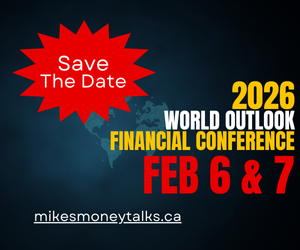Economic Outlook
Palladium is a precious metal that is more valuable than gold, and its price has skyrocketed over the last couple of years. In 2018, it was worth nearly $1,000 an ounce. Now, a single ounce is worth nearly $3,000. But as its value has risen, devices that use palladium have become magnets for thieves.
The metal is primarily used inside of a catalytic converter, a device that converts harmful emissions such as carbon monoxide and nitrous oxide into less harmful ones before being released into the atmosphere. Since their adoption into the automobile industry in the 1970s, catalytic converters have led to a significant drop in carbon monoxide and nitrous oxide emissions. And the more palladium they use, the more efficient they are at combating these emissions — making them the perfect target for thieves.
Over the years, catalytic converter theft has drastically risen due to the increasing value of palladium. According to a study of reported thefts, on average, 108 catalytic converters were stolen per month in 2018. That number rose to 282 monthly thefts in 2019 and 1,203 thefts per month in 2020.
With more and more manufacturers trying to reduce their impact on the environment and as stricter emissions regulations come into effect in places like Europe and China, the demand for palladium will only continue to escalate.
Verge Science spoke with a chemical engineer and one of the leading recyclers of catalytic converters in the country to find out what makes palladium so valuable — and what it would take to find new alternatives for this precious resource. Watch our latest video to see what we discovered.

Tesla posts record net income of $438 million, revenue surges by 74%
- Tesla reported record net income of $438 million during the quarter, as well as earnings of 93 cents per share on $10.39 billion in revenue.
- In its earnings release, the company said it has weathered chip shortages that have plagued the auto industry in part by “pivoting extremely quickly to new microcontrollers, while simultaneously developing firmware for new chips made by new suppliers.”
- On an earnings call, CEO Elon Musk said the delayed new version of the company’s Model S sedan will be delivered starting in May 2021, and Model X deliveries will begin in the third quarter of the year.
Tesla reported first-quarter results after the bell on Monday. The company beat expectations handily, buoyed by sales of bitcoin and regulatory credits, but the stock dipped as much as 3% after hours as investors digested the numbers.
Here’s how the company fared in the quarter, compared with analyst estimates compiled by Refinitiv:
- Earnings: 93 cents per share vs. 79 cents per share expected
- Revenue: $10.39 billion vs. $10.29 billion expected, up 74% from a year ago
Net profit reached a quarterly record of $438 million on a GAAP basis, and the company recorded $518 million in revenue from sales of regulatory credits during the period. It also recorded a $101 million positive impact from sales of bitcoin during the quarter.

The price of agricultural commodities like wheat, corn and soy have been absolutely soaring lately.

There are a number of factors driving the move, though one contributor is simply the lack of a robust supply response so far to all the demand. Yesterday on TV we spoke with Scott Irwin an agricultural economist at the University of Illinois, who cited surprisingly moderate planting intentions as being a driver of the huge move up in prices since the beginning of April.
Meanwhile, if you haven’t noticed, copper is getting close to trading at $10,000 a ton on the London Metals Exchange.

And as Thomas Biesheuvel reported today, companies and investors are still reluctant to expand mining despite the surge, making the types of long-term bets that would bring on more supply. This of course has the effect of making futures markets tighter, pushing up prices all else equal.
Yesterday I wrote about how prices are high on many goods today because of past choices that reduced supply. But it’s clear that those choices are still being made right now, whether it’s reluctance to invest in new mining capacity, or farmers remaining conservative in their planting decisions.

New York (CNN Business)Investing in cryptocurrencies requires an appetite for risk and a whole new vocabulary. Here’s a beginner’s guide to the fundamentals of crypto lingo.
Bitcoin
Blockchain
Buy the f****ing dip (BTFD)

(Bloomberg) — Investors looking to gauge the strength of the global recovery need look no further than metals markets.
Copper’s at the highest in a decade, aluminum is surging, and iron ore is closing in on a record as steel prices climb. Underpinning gains, which are taking commodities toward the highs of the last supercycle, is growing evidence that the world’s largest economies are shaking off the coronavirus shock and their growth roadmaps will have a decidedly green focus.
The U.S. recovery is accelerating and President Joe Biden’s $2.25 trillion infrastructure plan will highlight sectors like electric cars, driving further gains in commodities critical to the green-energy transition. That’s coming alongside a continued economic boom in China, where a push to reduce emissions is already filtering through to supply cuts for some metals just as demand is picking up.
“Global demand is recovering, led by China, while the green transition is bolstering sentiment further,” Zhu Yi, an analyst with Bloomberg Intelligence, said by phone. “In short, demand will stay resilient, while supply won’t expand, upside momentum will go forward.”
Metals extended their surge at the start of the week. Copper in London was up as much as 1.6% to $9,704 a ton, the highest since 2011. Iron ore in Singapore jumped to the highest since contracts launched in 2013, while Chinese steel futures reached fresh highs.












